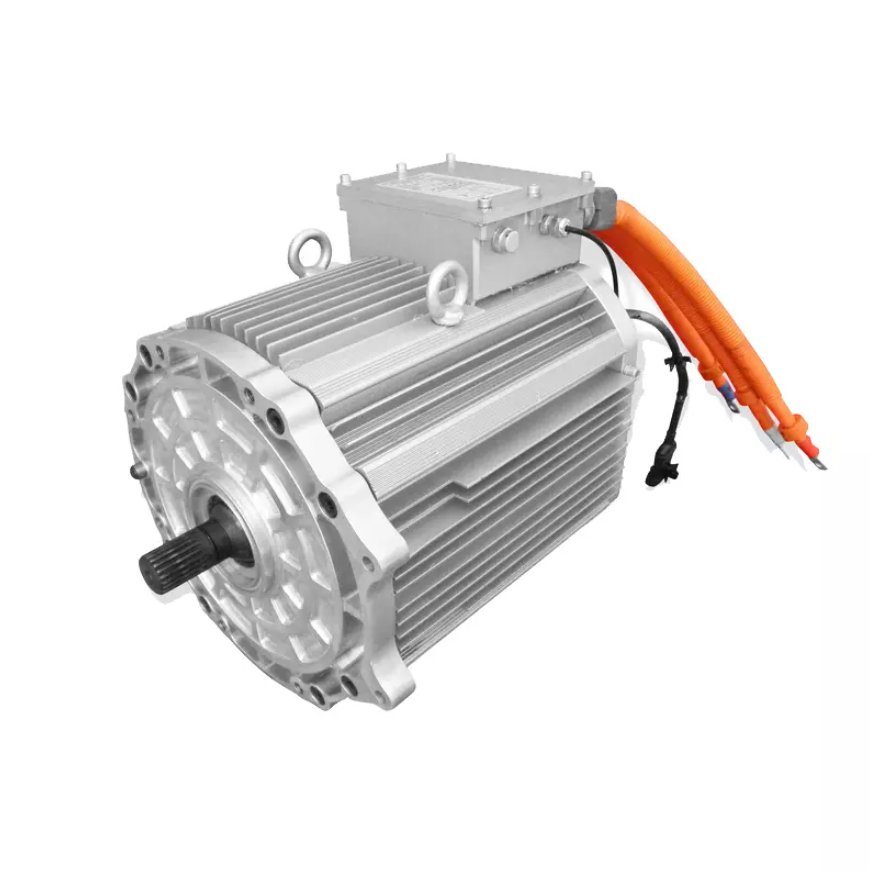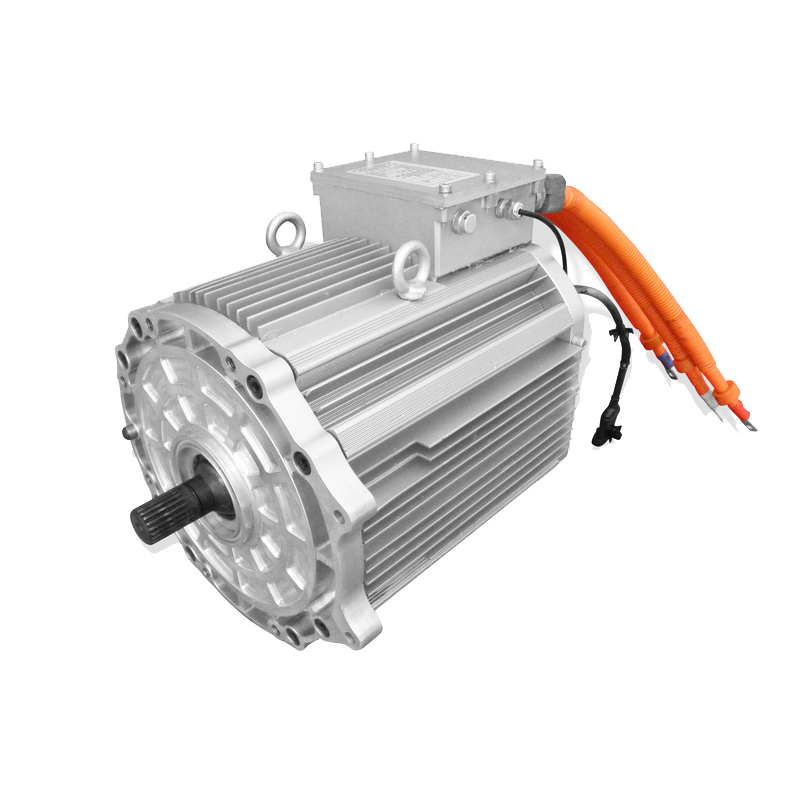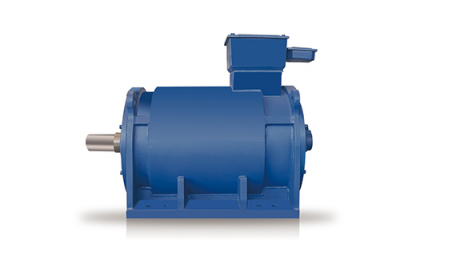
Have you ever wondered how electric motors work? Understanding the components of these machines is crucial for anyone interested in technology. In this article, we will explore whether electric motors contain permanent magnets. You’ll learn about the significance of permanent magnet motors and their unique advantages.
Understanding Electric Motors
What is an Electric Motor?
An electric motor is a device that converts electrical energy into mechanical energy. It operates on the principle of electromagnetism. When electric current flows through a wire, it creates a magnetic field. This interaction between electricity and magnetism is what makes motors work.
Basic Working Principle:
● Electricity generates a magnetic field.
● The magnetic field interacts with rotor components.
● This interaction produces rotational motion.
Types of Electric Motors
Electric motors come in various types, each serving specific purposes. Here’s a quick overview:
1. Induction Motors
a. Characteristics:Simple design.
i. High reliability.
ii. Commonly used in industrial applications.
b. Applications:Fans, pumps, and conveyor systems.
2. Synchronous Motors
a. Explanation:Operate at a constant speed.
i. Synchronize with the supply frequency.
b. Uses:Power generation and precision applications.
3. Permanent Magnet Motors
a. Introduction:Use permanent magnets to create a magnetic field.
i. Offer high efficiency and compact size.
b. Key Features:Lightweight and powerful.
i. Higher power density compared to other types.
c. Water-Cooled Permanent Magnet Motors:Designed for high-performance applications.
i. Advantages include better heat dissipation and prolonged lifespan.
Motor Type | Characteristics | Common Applications |
Induction Motors | Simple, robust | Industrial machinery |
Synchronous Motors | Constant speed, precise | Power generation |
Permanent Magnet Motors | Efficient, compact | Electric vehicles, robotics |
Understanding these types helps in choosing the right motor for specific tasks. Each type has unique features and applications that make it suitable for various industries.
![permanent magnet motors permanent magnet motors]()
What are Permanent Magnets?
Definition and Composition
Permanent magnets are materials that produce a persistent magnetic field. Unlike temporary magnets, they maintain their magnetism over time without needing an external power source. This property makes them essential in various applications, including electric motors.
Common Materials Used:
● Neodymium:
○ Known for its incredible strength.
○ Often used in small, powerful magnets.
● Ferrite:
○ Made from iron oxide and other metals.
○ Cost-effective and widely used in various applications.
● Samarium-Cobalt:
○ Offers high temperature resistance.
○ Ideal for specialized applications.
Key Characteristics of Permanent Magnets:
● Retain magnetism without electricity.
● Can be small yet very powerful.
● Resistant to demagnetization.
How Do Permanent Magnets Work?
Permanent magnets generate a magnetic field due to the alignment of their internal atomic structure. This magnetic field interacts with other magnetic materials and electric currents, making them crucial in electric motors.
Magnetic Fields:
● The area around a magnet where magnetic forces can be detected.
● Essential for creating motion in electric motors.
Comparison with Electromagnets:
Feature | Permanent Magnets | Electromagnets |
Power Source | No external power needed | Requires electricity |
Magnetism | Always on | Can be turned on/off |
Size | Generally smaller | Can be larger and bulkier |
Applications | Used in small devices | Common in heavy machinery |
In electric motors, permanent magnets create a consistent magnetic field. This field interacts with the rotor, enabling efficient motion. Unlike electromagnets, which need power to generate a magnetic field, permanent magnets are always ready to perform.
The Role of Permanent Magnets in Electric Motors
Do All Electric Motors Contain Permanent Magnets?
Not all electric motors use permanent magnets. In fact, there are several types of motors, and they can be categorized based on their use of permanent magnets.
Types of Motors:
● Permanent Magnet Motors:
○ Utilize permanent magnets to generate a magnetic field.
○ Common in applications requiring high efficiency.
● Induction Motors:
○ Do not use permanent magnets.
○ Rely on electromagnetic induction to function.
● Synchronous Motors:
○ Can use permanent magnets or electromagnets.
○ Operate at a constant speed synchronized with the power source.
Advantages of Using Permanent Magnets in Motors
Using permanent magnets in motors offers several benefits that enhance performance and efficiency.
1. Increased Efficiency:
a. Permanent magnet motors are known for their high efficiency ratings.
b. They often achieve IE4 efficiency levels, outperforming many other motor types.
2. Compact Size and Weight Reduction:
a. These motors are generally smaller and lighter.
b. This compactness makes them ideal for applications where space is limited.
3. Higher Power Density:
a. Permanent magnets provide greater power output relative to size.
b. This means they can deliver more power without increasing their footprint.
Efficiency Comparison:
Motor Type | Efficiency Rating (IE Rating) |
Permanent Magnet Motors | IE4 or higher |
Induction Motors | Typically IE2 to IE3 |
Synchronous Motors | Varies, often IE3 |
Applications of Permanent Magnet Motors
Permanent magnet motors find applications across various industries due to their efficiency and performance.
● Automotive Industry:
○ Used in electric vehicles for propulsion.
○ Provides smooth acceleration and regenerative braking.
● Robotics:
○ Essential in robotic arms and automated systems.
○ Offers precision and reliability.
● HVAC Systems:
○ Employed in energy-efficient heating and cooling systems.
○ Helps reduce energy consumption.
Examples of Products:
● Electric Vehicles:
○ Tesla models use permanent magnet motors for high efficiency.
● Industrial Machinery:
○ Used in conveyor systems and pumps for reliable operation.
● High-Power Applications:
○ Wind turbines utilize permanent magnet motors for energy generation.
○ Industrial compressors benefit from their efficiency in long-duration operations.
With their numerous advantages, permanent magnet motors play a crucial role in modern technology, making them a popular choice in various fields.
How Permanent Magnet Motors Compare to Other Motor Types
Efficiency Comparison
When we talk about electric motors, efficiency is a key factor. Permanent magnet motors stand out for their remarkable efficiency levels, especially when compared to induction motors.
● Efficiency Levels:
○ Permanent Magnet Motors: Often achieve efficiencies of 90% or higher.
○ Induction Motors: Typically range between 80% to 90%.
Long-Term Energy Savings:
● Over time, the higher efficiency of permanent magnet motors can lead to significant energy savings.
● For instance, using a permanent magnet motor in an industrial application could save thousands of dollars in energy costs annually.
Cost Considerations
Cost is another important aspect to consider when choosing between motor types.
● Initial Costs vs. Long-Term Operational Costs:
○ Permanent Magnet Motors: Generally have higher upfront costs due to advanced technology and materials.
○ Induction Motors: Usually cheaper to purchase but may incur higher operational costs over time.
Factors Affecting the Cost of Permanent Magnet Motors:
1. Material Costs: Neodymium and other rare earth materials can drive prices up.
2. Design Complexity: More sophisticated designs often lead to higher manufacturing costs.
Cost-Benefit Analysis:
● Although permanent magnet motors may cost more initially, their energy savings can offset these expenses.
● For example, a factory investing in permanent magnet motors might see a return on investment within a few years due to reduced energy bills.
Maintenance and Durability
Maintenance requirements can vary significantly among different motor types.
● Maintenance Requirements for Permanent Magnet Motors:
○ Generally low maintenance due to fewer moving parts.
○ Regular inspections are recommended, but they do not require frequent servicing.
● Lifespan Compared to Other Types of Motors:
○ Permanent magnet motors typically have a longer lifespan than induction motors.
○ Many can last over 15 years with proper care.
Durability in Harsh Environments:
● Permanent magnet motors often feature high protection ratings, such as IP55, which guards against dust and water.
● High insulation ratings, like F class, enhance durability, making them suitable for challenging conditions.
Feature | Permanent Magnet Motors | Induction Motors |
Efficiency | 90% or higher | 80% to 90% |
Initial Cost | Higher | Lower |
Maintenance | Low | Moderate to high |
Lifespan | 15+ years | 10-15 years |
Durability (IP Rating) | IP55 | Varies |
In summary, while permanent magnet motors may have a higher upfront cost, their efficiency, low maintenance needs, and durability make them a strong contender in various applications.
![permanent magnet motors permanent magnet motors]()
Future Trends in Permanent Magnet Motors
Innovations and Developments
The world of permanent magnet motors is evolving rapidly. New technologies and innovations are emerging, promising to enhance performance and broaden applications.
● Emerging Technologies:
○ High-Efficiency Magnets: Research is focused on developing stronger and lighter magnets, which can significantly improve motor performance.
○ Advanced Manufacturing Techniques: Methods like 3D printing are being explored to create more complex and efficient motor designs.
Potential Impact of Advancements:
● These innovations could lead to motors that are not only more efficient but also more versatile.
● For example, advancements in cooling methods may allow motors to operate at higher power levels without overheating.
Focus Areas:
● Lightweight Materials: Using materials like carbon fiber can reduce weight while maintaining strength.
● Improved Cooling Methods: Innovative cooling techniques can enhance motor efficiency and lifespan.
Environmental Considerations
As we look to the future, environmental sustainability is becoming increasingly important. Permanent magnet motors play a significant role in this trend.
● Sustainability of Materials:
○ The materials used in permanent magnets, such as rare earth elements, raise concerns about sustainability.
○ Research is underway to find alternatives that are both effective and environmentally friendly.
● Role in Green Technology:
○ Permanent magnet motors contribute to the development of green technologies, such as electric vehicles and renewable energy systems.
○ High-efficiency motors help reduce energy consumption and lower carbon footprints.
Discussion Points:
● Energy Consumption Reduction: By using permanent magnet motors, industries can achieve significant energy savings.
● Lower Carbon Footprint: The shift to efficient motors aligns with global efforts to combat climate change.
Aspect | Current Situation | Future Potential |
Material Sustainability | Concerns over rare earth elements | Researching sustainable alternatives |
Motor Efficiency | High, but room for improvement | Innovations could boost efficiency further |
Applications | Limited to specific industries | Broader applications in green tech |
Environmental Impact | Positive, but needs improvement | Significant reduction in carbon footprint |
In conclusion, the future of permanent magnet motors looks promising, driven by innovations and a strong focus on sustainability. These trends will likely shape the industry for years to come.
Conclusion
Understanding whether electric motors contain permanent magnets is crucial.
Permanent magnet motors offer significant advantages, such as higher efficiency and lower maintenance.
Their applications span various industries, including electric vehicles and renewable energy.
As technology advances, the benefits of these motors will continue to grow, promoting sustainability and energy savings.
FAQ
Q: Do all electric motors use permanent magnets?
A: No, not all electric motors use permanent magnets. Some rely on electromagnetic induction.
Q: What are the benefits of permanent magnet motors?
A: Benefits include higher efficiency, lower maintenance, and longer lifespan.
Q: How do permanent magnet motors compare to induction motors?
A: Permanent magnet motors are generally more efficient and require less maintenance than induction motors.
Q: What materials are used to make permanent magnets?
A: Common materials include neodymium, samarium-cobalt, and ferrite.
Q: What industries commonly use permanent magnet motors?
A: Industries include automotive, aerospace, and renewable energy.
Q: What is the lifespan of a permanent magnet motor compared to other types?
A: Permanent magnet motors typically last longer, often exceeding 15 years with proper care.




















